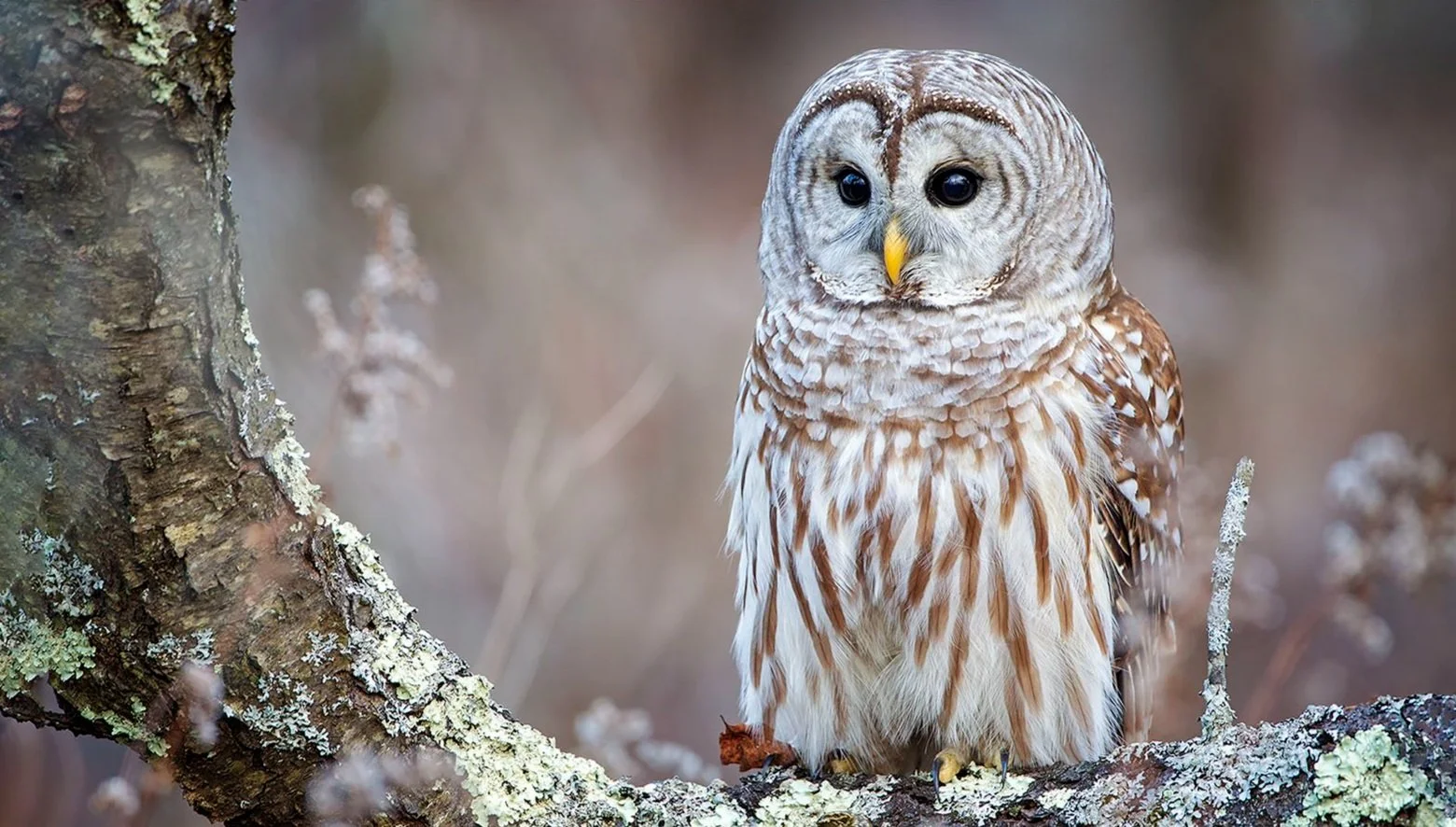Recently at dusk and into the night, we’d been hearing recurring shrieks and cries of what we thought to be some kind of owlet pleading for food from a nest. While these calls were likely coming from a Great Horned Owl, it reminded me of an instance this past summer in the Umpqua National Forest in Oregon, involving another owl species.
Barred Owl (photo by Arlene Koziol).
My crew and I were camping out at the Tiller Ranger District to assist with rare plant surveys. As we sat around the fire as the sun set, we heard a distinctive and nearby small choir of shrieks begin from the douglas firs lining our tents. In a not so subtle tone of disdain, a Forest Service employee commented, “you get to listen to the Barred Owls all night, lucky you…”
Revealing my ignorance, my reaction was that of passive positivity. Being from the east (relative to Oregon), any opportunity to hear or see a North American owl is exciting, barred or otherwise. The Barred Owl is, after all, one of Wisconsin’s native owls. However, this is not the case out west, where the Barred Owl is reviled as an invasive species displacing the threatened and declining Spotted Owl. From the National Parks Service’s article, “Spotted Owl and Barred Owl”:
The barred owl historically resided in the eastern United States, east of the Great Plains, which served as an impassable barrier to forest-dwellers like the barred owl. Closely related to the spotted owl, it filled the niche of a forest-dwelling owl similar to that of the spotted owl in the west. However, at some point less than 100 years ago barred owls began dispersing westward. It’s believed that this was due, at least partially, to changes in habitat caused by a cessation of Native American burning in the plains after Europeans and other foreigners arrived. Lack of fire allowed trees to grow creating habitat “bridges” across the plains that facilitated barred owl movement.
Spotted Owl can be similar in appearance to Barred Owls (photo by Andy Reago & Chrissy McClarren).
Species migration and displacement are natural processes that have been occurring since the proliferation of life on Earth, but here we have a case of rapid acceleration likely due to human factors. Barred and Spotted Owls are members of the same genus, Strix, and can be difficult to distinguish, occupying similar habitats and relying on similar prey. Barred Owls are known to harass Spotted Owls out of their territories, and are less dependent on old-growth forest for their survival. As Barred Owl populations increase and Spotted Owls decrease, tough questions have arisen about the future of the two species and the possible need for management against the Barred Owl. Interestingly and controversially, multiple studies involving the lethal take of Barred Owls have been performed, and are currently being conducted, to better assess the true damage being done to Spotted Owl populations. The results have been fairly straightforward—Spotted Owl populations tend to stabilize in areas where Barred Owls are culled, and continue declining in control areas where no take is performed.
Even with this knowledge, can federal agencies really commit to any kind of long term management that involves the indefinite take of Barred Owls? These are uneasy questions for the future, and this may have stirred uncomfortable feelings in you, the reader. What is the price of threatened species conservation? Which invasive species can be ethically removed, and which may not? Is species migration and displacement an inevitable product of land conversion, climate change and development? Would this scenario be different if the Barred Owl was native to another continent, akin to the European Starling or the hogs introduced by Spanish explorers? Multiple groups have actually sued US Fish and Wildlife over these studies, claiming they violate the Migratory Bird Treaty Act. Others argue better protection of the old-growth forests that Spotted Owls depend on is the more logical and feasible course of action. Whatever you feel the answer to these questions may be, such scenarios will only become more common in our rapidly changing landscapes and climate.
A Barred Owl feeding their young (photo by Arlene Koziol).
Collecting seed in the Lowlands South Prairie at Faville Grove early one morning, I see a Barred Owl swoop into the floodplain prairie then recede back into the adjacent woodline. Here you are my friend, I think to myself. There, you are something else.
Written by Tucker Sanborn, Faville Grove Sanctuary resident land steward
Cover photo by Phil Brown. A Barred Owl with mottled gray and brown feathers perches on a mossy tree branch.








